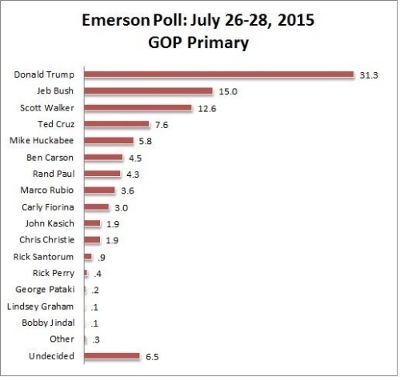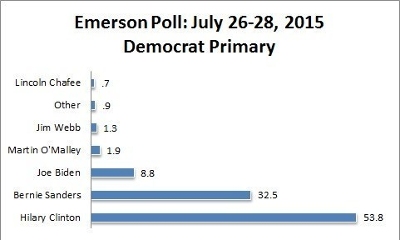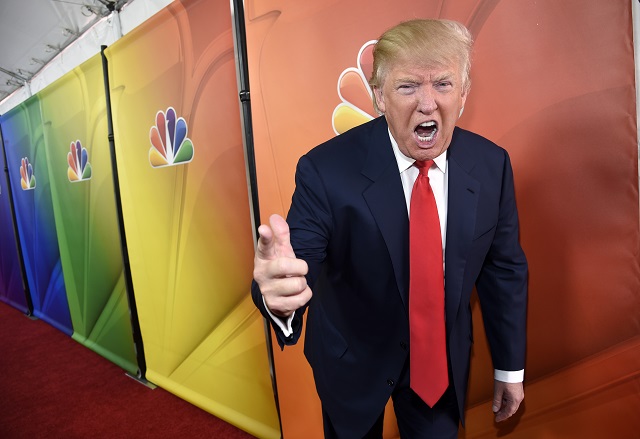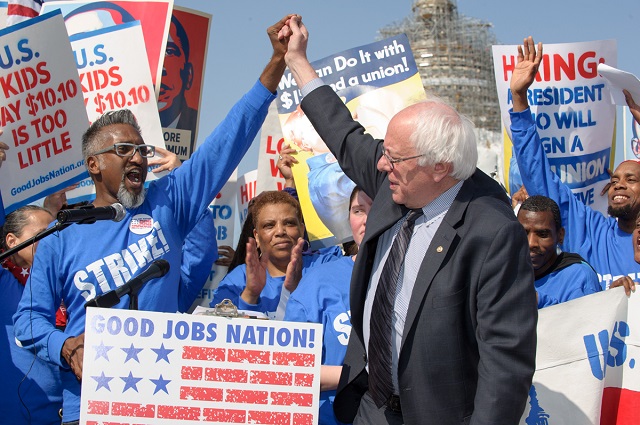Poll: Teflon Donald Takes Double Digit Lead into GOP Debates
BOSTON /PRNewswire-USNewswire/ — One week out from the first GOP debate, Donald Trump leads the Republican field with 31% of the vote, followed by Gov. Jeb Bush at 15% and Gov. Scott Walker in third at 13%. The survey was conducted July 26 to July 28, with 481 likely GOP voters at a 4.4% margin of error.

Forty percent (40%) of respondents viewed Trump’s comments regarding Senator John McCain’s War record as unimportant to their vote while another 47% said they would be less likely to vote for Trump because of his comments about the Arizona Senator. Interestingly, 11% percent said they were more likely to vote for Trump because of his commentary on McCain.
Rounding out the top 10 Republicans in this poll were Sen. Ted Cruz at 8%, Gov. Mike Huckabee at 6%, followed by Dr. Ben Carson at 5%, Sen. Rand Paul at 4% and Sen. Marco Rubio at 4%. Carly Fiorina was in 9th place at 3% and Gov. John Kasich was tied with Gov. Chris Christie with 2% of the vote. All other candidates received under 1% of the vote; 7% of Republican Primary voters were undecided.
Sen. Hillary Clinton holds a significant lead with 54% of the vote in the Democrat Primary with Sen. Bernie Sanders in second at 33% and VP Joe Biden at 9%. All other announced candidates register under 2% of the vote each. The sample size of likely Democrat Primary voters was 476 with a margin of error of 4.4%.

In a head to head contest, Clinton holds a 2 point lead over Jeb Bush 44% to 42%, an 8 point lead over Walker 49% to 41%, and a 9 point lead over Donald Trump 49% to 40%.
The poll suggests that likely voters are not that thrilled with any of the presidential candidate as all held higher negative then favorable opinions except for Sanders who had a 33% favorable and 32% unfavorable opinion.
Clinton holds an overall 38% favorable and 48% unfavorable rating, Trump is at 31% to 56% rating, Bush at 25% to 52% and Walker at 24% to 38%.
Trump holds the highest favorable rating among Republican primary voters at 54% to 33%, with Bush at 40% to 39% and Walker at 46% to 20%.
ABOUT THE EMERSON COLLEGE POLL
The Emerson College Polling Society poll was conducted Sunday July 26 through Tuesday July 28. The polling sample for both the Democrat and the GOP Primary consisted of 476 and 481 likely voters each, with a margin of error of +/-4.4% and a 95% confidence level. The General Election sample consisted of 950 likely voters with a margin of error of +/-3.1% and a 95% confidence level. Data was collected using an Interactive Voice Response (IVR) system. The full methodology and results can be found at www.theecps.com.
RELATED ARTICLE: SHOCK POLL — Donald Trump Leads Jeb Bush in Florida



 The incomes of households in the three middle income quintiles grew 40 percent between 1979 and 2011. Somewhat surprisingly, given the histrionics about the state of America’s poor, income in households in the lowest quintile was 48 percent higher in 2011 than it was in 1979.
The incomes of households in the three middle income quintiles grew 40 percent between 1979 and 2011. Somewhat surprisingly, given the histrionics about the state of America’s poor, income in households in the lowest quintile was 48 percent higher in 2011 than it was in 1979.